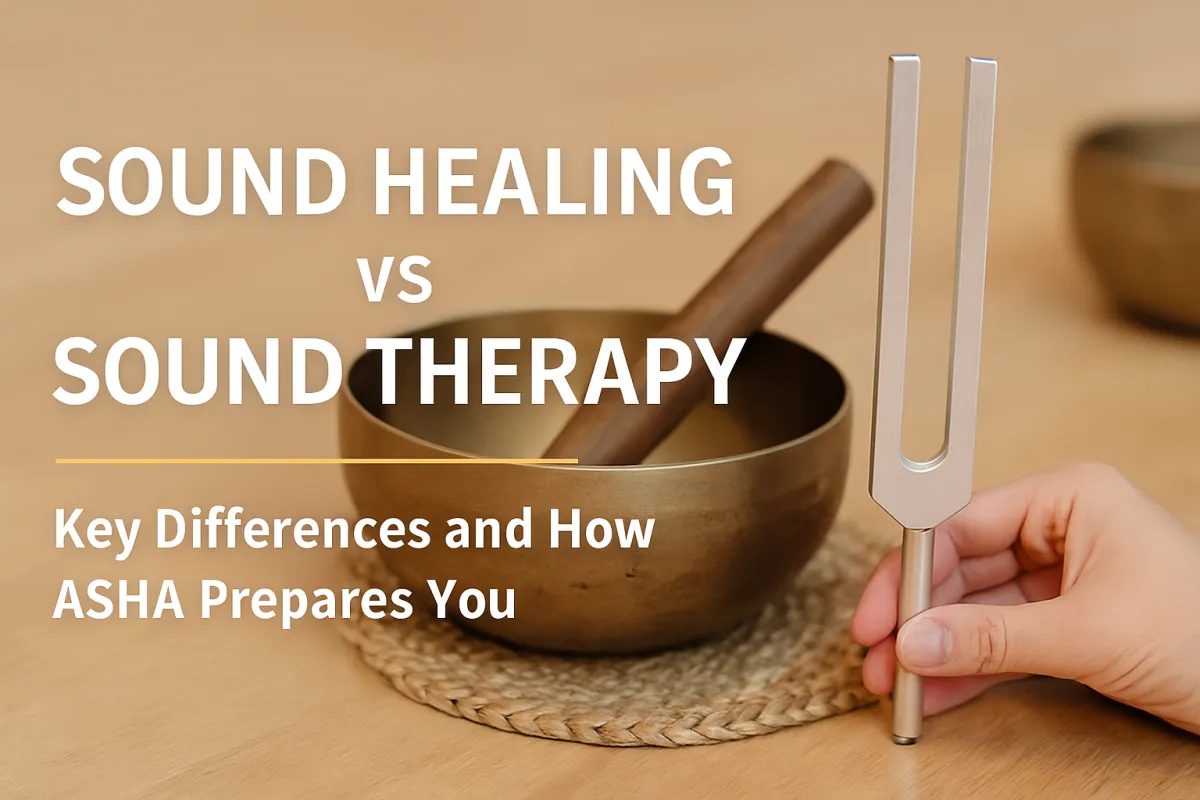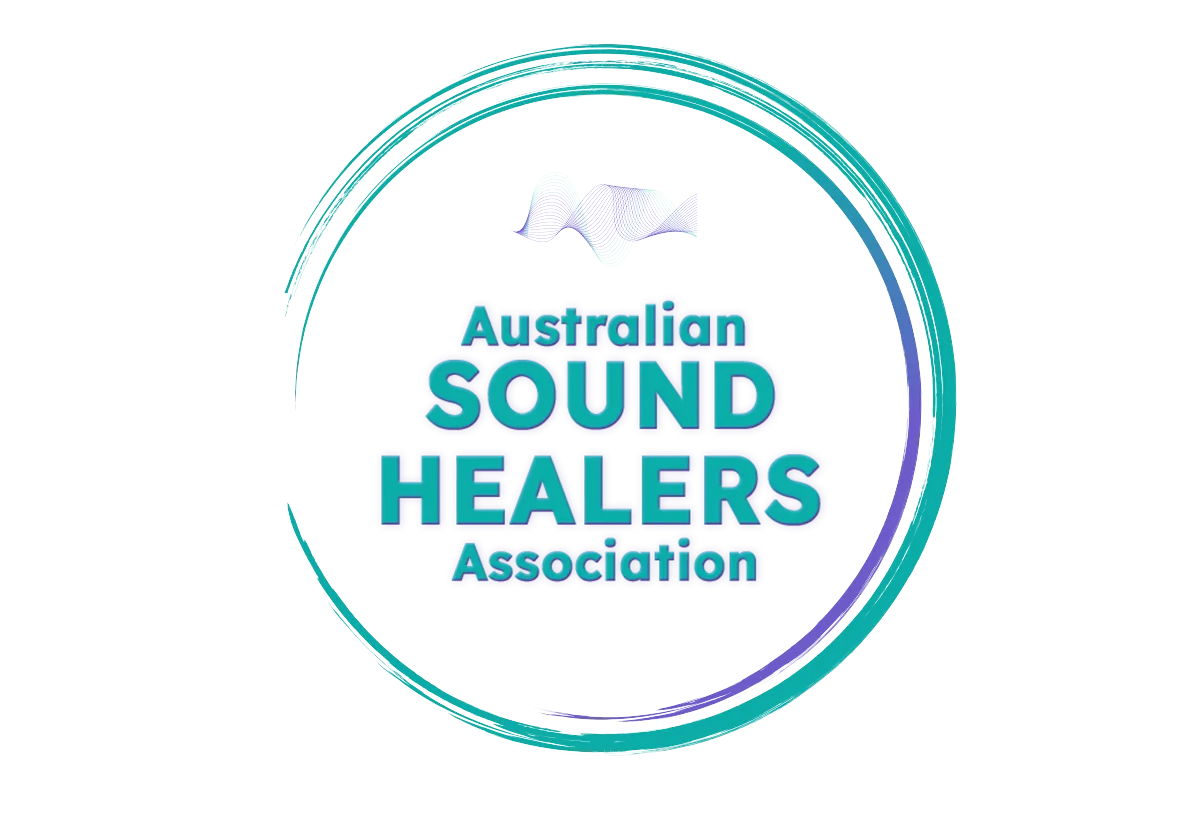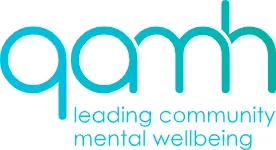
Sound Healing vs Sound Therapy: Key Differences and How ASHA Prepares You
Sound Healing vs Sound Therapy: Key Differences, Training Pathways, and How ASHA Prepares You
If you are exploring a career in vibrational healing, you’ve likely come across the terms sound healing and sound therapy. In Australia, these terms are often used interchangeably, yet they have distinct meanings when it comes to training, scope of practice, and client expectations.
This guide explains the difference between sound healing and sound therapy, answers common questions about qualifications and legitimacy, and shows how ASHA’s Advanced Practitioner Training prepares you to practice both safely and professionally.
Quick Definitions: Sound Healing vs Sound Therapy
Sound healing is a wellness-based practice using voice and instruments like gongs, bowls, and chimes to support relaxation, nervous system regulation, and spiritual wellbeing. It is commonly offered in yoga studios, retreats, and wellness events. Sessions are intuitive, lightly guided, and documentation is minimal.
Sound therapy is a structured, trauma-informed application of sound. It includes intake, consent, ethical boundaries, and documentation. Practitioners may work one-on-one with clients seeking emotional regulation, trauma integration, or stress recovery, and may also collaborate with other professionals or support clients under systems like the NDIS as unregistered providers.
✅ ASHA’s Advanced Practitioner Training prepares you for both approaches, ensuring ethical, adaptable, and client-centred practice.
What Clients Can Expect
In sound healing sessions, clients can expect:
A guided sound experience using bowls, gongs, chimes, and vocals
A focus on relaxation, presence, and emotional wellbeing
No formal intake or ongoing documentation
Collaboration with facilitators of movement or breathwork (when relevant)
In sound therapy sessions, clients may experience:
A structured intake and informed consent process
Documented goals, progress tracking, and clear boundaries
Trauma-informed care aligned with ethical scope of practice
Are These Legitimate Modalities?
Yes. Both sound healing and sound therapy are legitimate wellness modalities in Australia when practiced within scope and with ethical clarity.
Sound healing is recognised as a supportive wellness service. Its legitimacy depends on clear communication, respectful practice, and avoiding medical claims.
Sound therapy is gaining recognition for its trauma-aware frameworks and supportive role in emotional health. While not a clinical modality, it aligns with evidence-informed, ethical practice and works well alongside other therapeutic supports.
⚠️ In Australia, sound practitioners are not registered allied health professionals unless they hold an additional qualification. They must not diagnose or treat medical conditions.
Scope, Ethics, and Practice Standards in Australia
Practitioners trained through ASHA learn to:
Use plain-language consent and screen for contraindications
Maintain appropriate records without breaching privacy
Refer out when client needs exceed their scope
Avoid cultural appropriation and respect Indigenous sound traditions
Collaborate ethically with wellness and health professionals
ASHA’s frameworks are designed to help you build a safe, inclusive, and trauma-informed practice from the ground up.
What Training Do You Need?
There is no government-regulated license for sound healing or sound therapy in Australia. However, high-quality, ethical training is essential for credibility, safety, and client trust.
ASHA’s Advanced Practitioner Training covers:
Ten modules delivered online with live Zoom peer sessions
Trauma-informed frameworks and practical assessments
Lifetime certification upon completion
Access to member resources and pathways
After graduation, practitioners can join ASHA at various membership levels.
Membership Options
Silver – For students and early-stage practitioners
Gold – For certified practitioners ready for insurance and directory listing
Platinum – For experienced facilitators, teachers, and mentors
Learn more: Sound Therapy Practitioner Training
Key Differences At A Glance
Purpose
• Sound Healing: Supports relaxation, energy alignment, and emotional wellbeing
• Sound Therapy: Offers structured, trauma-informed care with clear outcomes
Setting
• Sound Healing: Group spaces, retreats, and community wellness events
• Sound Therapy: One-on-one sessions and therapeutic environments
Structure
• Sound Healing: Lightly guided, intuitive sessions with minimal documentation
• Sound Therapy: Includes intake, planning, and ethical documentation
Practitioner Role
• Sound Healing: Facilitator creating safe, resonant experiences
• Sound Therapy: Practitioner working within ethical scope and duty of care
Training
• Both pathways are included in the ASHA Advanced Practitioner Certification
Frequently Asked Questions
Do I have to choose one path?
No. ASHA’s training covers both sound healing and sound therapy so you can practice confidently across a range of settings.
Is sound therapy a recognised career?
Yes, when practiced ethically and within a clear scope of care. ASHA provides the tools and standards to support professionalism and accountability.
Do I need a music degree?
No. ASHA does not teach music therapy. Our focus is sound healing and sound therapy from a wellness and trauma-informed perspective.
Next Steps
If you want to be recognised as a qualified sound practitioner in Australia:
Enrol in the Advanced Practitioner Training
Join ASHA at the membership level that suits your stage
Gain access to insurance, directory visibility, and professional support
Final Word
Sound healing and sound therapy both honour the profound healing potential of vibration. With ASHA, you don’t have to choose one or the other—you gain the tools, ethics, and confidence to hold space across the spectrum. Whether in a retreat, a community event, or one-on-one support, your training ensures you’re grounded, informed, and ready to make an impact.


